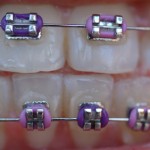
One of the potential side effects of orthodontic treatment is pain and discomfort. This can lead to reduced compliance or discourage patients from treatment. The aim of this study was to evaluate the effectiveness of pharmacological interventions on pain experienced by patients undergoing orthodontic treatment.
What did they do
The Medline and Cochrane databases were searched together with Google Scholar and the clinical trials database for Randomized controlled trials evaluating pharmacological management of pain during orthodontic treatment. The titles and abstracts were checked independently by two reviewers. data was extracted by one author) and checked by a second. Risk of bias was assessed. The main outcome was pain level during chewing and biting, as measured on a visual analogue scale (VAS), at 2, 6 and 24 h after orthodontic intervention. A meta-analysis was conducted.
What did they find
- 14 articles looked at the use of NSAIDs for orthodontic pain, only 7 used VAS scores and were included in the meta-analysis.
- A variety of agents a were used 400mg and 600mg ibuprofen, acetaminophen-paracetemol in various dosages, aspirin, naproxen sodium or flurbiprofen. Time of administration differed between studies.
- Metaanalysis of the six studies comparing ibuprofen vs. placebo in pain levels during chewing, 24 h after intervention, revealed no statistically significant difference.
- The results did not differ when evaluating pain levels during biting, using the same medications (ibuprofen vs. placebo) and time of measurement.
- Comparing ibuprofen to placebo during chewing and biting at an earlier time (6 h), we found a statistically significant effect.
- At 2 h after intervention, pain levels between ibuprofen and placebo differed significantly during biting but did not differ significantly during chewing.
- When comparing acetaminophen to ibuprofen, no statistically significant differences were found either for biting or for chewing, for any of the three time points (2, 6 and 24 h).
- Significant evidence of heterogeneity between studies was observed in biting, between placebo and ibuprofen 2 h after intervention as well as in the acetaminophen vs. ibuprofen measurements at 2 h
- Funnel plots confirmed evidence of asymmetry, perhaps signifying publication bias, although other factors cannot be excluded
They concluded
Ibuprofen can reduce pain at 6 h after orthodontic procedure, whereas it has a statistically non-significant effect at 24 h, the peak pain time, after separators or archwire placement. There seems to be no difference in effectiveness between ibuprofen and acetaminophen, although the evidence is weak.
Angelopoulou MV, Vlachou V, Halazonetis DJ. Pharmacological management of pain during orthodontic treatment: a meta-analysis. Orthod Craniofac Res. 2012 May;15(2):71-83. doi: 10.1111/j.1601-6343.2012.01542.x. PubMed PMID: 22515183.
Comment
The authors have adopted a reasonably robust methodological approach to this review topic. Although they could perhaps have searched additional databases Embase and LILACS. Their data abstractions could also have been conducted independently and in duplicate. They were only able to include 7 trials within their meta-analysis which was (as they point out) hampered by heterogeneity between the studies in terms of time of intervention, dosage and timing of drug administration, activity measured (chewing, biting) and orthodontic appliance.
Considering the number of courses of orthodontic treatment that are initiated it is perhaps surprising that only a relatively small number of small randomised controlled trials are available for inclusion in the review. An earlier review by Xiaoting et al took a slightly broader approach.
Xiaoting L, Yin T, Yangxi C. Interventions for pain during fixed orthodontic appliance therapy. A systematic review. Angle Orthod. 2010 Sep;80(5):925-32.Review. PubMed PMID: 20578865.
